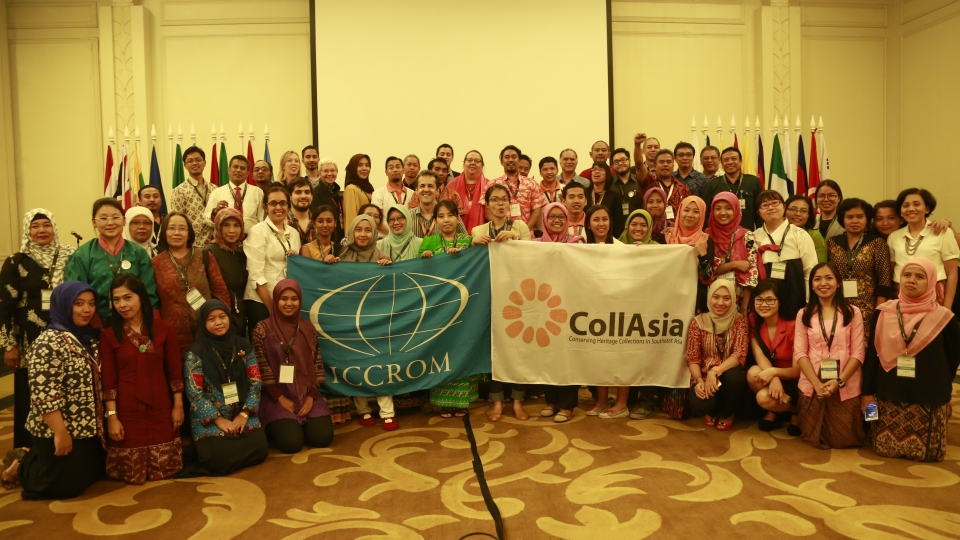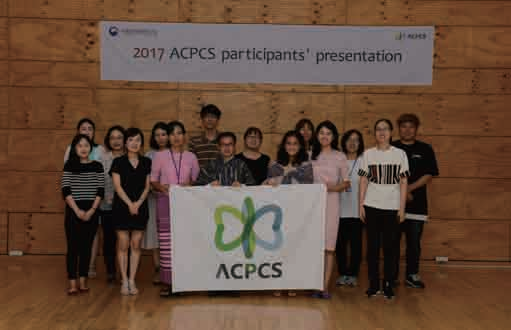The Korean mask-dance tradition known as talchum was entered into the UNESCO Representative List of the Intangible Cultural Heritage of Humanity in December of last year. This achievement was a result of longstanding dedicated efforts made by the Cultural Heritage Administration in close cooperation with mask-dance masters and other stakeholders. Talchum is a multifaceted form of performing art that has long been beloved by Korean people. Several local variants of talchum were supported under government safeguarding systems in the 1960s as the national heritage protection system started to take form. Now, this time-honored Korean tradition has finally gained organizational recognition in the international community.
Who were they?
When did they die?
What did they eat?
Where did they live?
What illnesses did they suffer?
In what environment did they live?
What kinds of tools did they make?
Watching the film series Night at the Museum, I often think about how wonderful it would be if Koreans of the past could come back to life and describe to us in detail how they lived. Admittedly, it is a far-fetched fantasy. Instead, my colleagues at the Conservation Science Division and I travel back and forth between heritage sites and laboratories as we reconstruct the lifeways of the people who lived in Korea before our time. The Conservation Science Division has its roots in a small team installed at the National Research Institute of Cultural Heritage (NRICH) in 1969 when this research arm of the Cultural Heritage Administration was inaugurated. We at the Conservation Science Division are dedicated to analyze archaeological materials such as metal, pottery, stone, and glass using cutting-edge technology to uncover the production technologies, provenance, and the preservation state of cultural heritage. The diverse materials subject to analysis include metals, ceramics, stone, pigments, and textiles. We also carry out analysis on human and animal remains, as well as other organic residues, contributing to reveal the genetic information, palaeodiet, and palaeoenvironment.

In addition, we contribute to the future value of cultural heritage by providing policy support such as scientific analysis of state-designated cultural heritage and scientific information for cultural heritage designation. We are committed to continuously exploring and embracing state-of-the-art technologies in our work. We have introduced a diverse range of non-destructive analysis tools to examine the precision diagnosis of the conservation state and production techniques of large Buddhist scroll paintings (gwaebul) from the Joseon era and to study their coloring materials (pigments, dyes, fabrics, etc.) Hyperspectral imaging can analyze the sketch of a painting, and has recently been used to investigate the nationally designated “Mural Painting in Josadang Shrine of Buseoksa Temple.” The same imaging technique is also applied to large-scale cultural heritage that are difficult to investigate or monitor, such as the reclining stone Buddha at Unjusa Temple in Hwasun. In 2021, the Analytical Science Center under the supervision of the Conservation Science Division was opened marking the commencement of a new era in radiocarbon dating by the establishment of state-of-the-art infrastructure and facilities for accelerator mass spectrometry (AMS). This tool facilitates carbon dating analysis of various organic materials, including bone, wood, paper, textiles, and organic residues. Also, we designed a digital database system to store scientific data, which will serve as a central component throughout the entire process of cultural heritage analysis and dating, thereby encompassing sample storage, analysis, and database management. Conservation science is a multidisciplinary undertaking spanning various fields such as chemistry, biology, physics, materials science, and archaeology. These diverse disciplines have made great contributions to accumulating information for reconstructing the past.

Biotechnology in particular is the primary driving force behind the development of DNA and isotope research on human remains. Ancient DNA analysis of human bones allows us to unravel valuable information about past people including their genetic information, kinship relationships, disease prevalence, peopling patterns, and migration history. Also, stable carbon and nitrogen isotope analysis of human bone collagen provides invaluable information on palaeodiet in various contexts such as subsistence, nutrition, status, and environment. Our achievements in this regard include an investigation into the Neolithic Janghang site in Busan. We have uncovered the subsistence economy in this coastal area during that time, revealing a predominant reliance on marine fish and shellfish as food sources. We have also revealed aspects of the societies of the past through our inquiries into the Imdang site in Gyeongsan. Our analysis of human bones excavated in this site showed a distinction in the protein consumption between primary occupants of the ancient tombs and the people included as human sacrifices. Stable isotopic results of human bones from a site in Honam Province during the mid-to-late Joseon period revealed shifts in palaeodietary patterns that corresponded to socioeconomic changes associated with increased agricultural productivity during that era. In our recent research, we have applied infrared spectroscopy and X-ray diffraction analysis to Baekje cremated human remains deprived of any DNA or protein residues. Our recent findings present a significant evidence of high-temperature cremation, reaching temperatures between 700 and 1,000 degrees Celsius. This valuable information sheds light on the cremation events and funeral culture in archaeological sites.

In addition to our ongoing conservation science research efforts, we are committed to fostering collaboration and cooperation with the global community, actively sharing our experiences and knowledge. We have actively engaged in international cooperation endeavors, exemplified by our collaboration with the Institute of Archaeology at the Mongolian Academy of Sciences for a joint study on ancient human bones. Furthermore, we have applied our expertise in conservation of Khmer Stone cultural heritage in Cambodia, working in partnership with the Angkor Conservation Office in Cambodia. Furthermore, we are committed to fostering the capacity building of cultural heritage conservation through regional and global initiatives, with the aim of ensuring a sustainable future. In NRICH, we are strongly committed to organizing the Asia Cooperation Program on Conservation Science (ACPCS), and an annual international training program for Asian countries as well as On –Site Technical Training Program (OTTP). Since the program's establishment in 2005, we have effectively facilitated the participation of 113 professionals representing 19 countries. Additionally, we have actively engaged as a partner in the capacity building program CollAsia, led by the International Centre for the Study of the Preservation and Restoration of Cultural Property (ICCROM). We are dedicated to fostering collaboration and cooperation worldwide in order to address the challenges of cultural heritage preservation. Using cuttingedge technologies and our human resources, we are committed to meeting these challenges.




